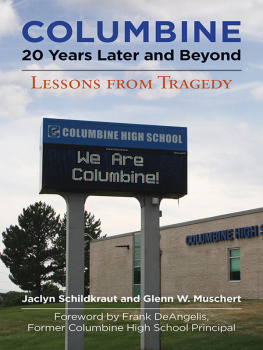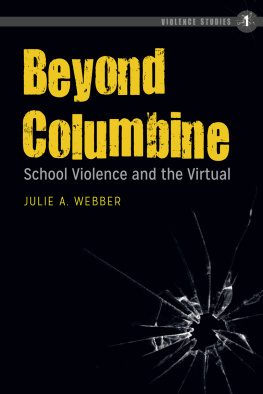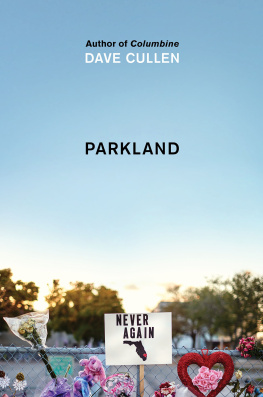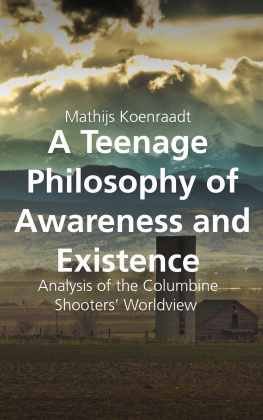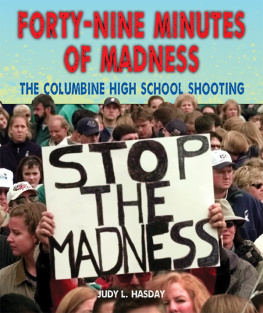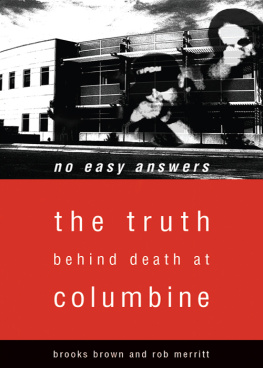Columbine
On April 20, 1999, two boys left an indelible stamp on the American psyche. Their goal was simple: to blow up their school, Oklahoma-City style, and to leave a lasting impression on the world. Their bombs failed, but the ensuing shooting defined a new era of school violence-irrevocably branding every subsequent shooting another Columbine.
When we think of Columbine, we think of the Trench Coat Mafia; we think of Cassie Bernall, the girl we thought professed her faith before she was shot; and we think of the boy pulling himself out of a school window the whole world was watching him. Now, in a riveting piece of journalism nearly ten years in the making, comes the story none of us knew. In this revelatory book, Dave Cullen has delivered a profile of teenage killers that goes to the heart of psychopathology. He lays bare the callous brutality of mastermind Eric Harris, and the quavering, suicidal Dylan Klebold, who went to prom three days earlier and obsessed about love in his journal.
The result is an astonishing account of two good students with lots of friends, who came to stockpile a basement cache of weapons, to record their raging hatred, and to manipulate every adult who got in their way. They left signs everywhere, described by Cullen with a keen investigative eye and psychological acumen. Drawing on hundreds of interviews, thousands of pages of police files, FBI psychologists, and the boys tapes and diaries, he gives the first complete account of the Columbine tragedy.
In the tradition of HELTER SKELTER and IN COLD BLOOD, COLUMBINE is destined to be a classic. A close-up portrait of hatred, a community rendered helpless, and the police blunders and cover-ups, it is a compelling and utterly human portrait of two killers-an unforgettable cautionary tale for our times.
COLUMBINE
A Novel by
Dave Cullen
Copyright 2009
by Dave Cullen
Dedication:
For Rachel, Danny, Dave,
Cassie, Steven, Corey,
Kelly, Matthew, Daniel, Isaiah,
John, Lauren, and Kyle.
And for Patrick,
for giving me hope.
Authors Note on Sources
A great deal of this story was captured on tape or recorded contemporaneously in notebooks and journalsby the killers before the murders, and by investigators, journalists, and researchers afterward. Much more was reconstructed or fleshed out from the memory of survivors. Anything in quotation marks was either captured on tape, recorded by me or other journalists or police investigators at the time, published in official documents, or, in the case of casual conversations, recalled by one or more of the speakers with a high degree of certainty. When the speaker was less sure about the wording, I used italics. I have abbreviated some exchanges without insertion of ellipses, and have corrected some grammatical errors. No dialogue was made up.
The same convention was applied to quotations from the killers, who wrote and taped themselves extensively. Their writings are reproduced here as written, with most of their idiosyncrasies intact.
Passages of this book suggesting their thoughts come primarily from their journals and videos. A multitude of corroborating sources were employed, including school assignments; conversations with friends, family members, and teachers; journals kept by key figures; and a slew of police records compiled before the murders, particularly summaries of their counseling sessions. I often used the killers thoughts verbatim from their journals, without quotation marks. Other feelings are summarized or paraphrased, but all originated with them. The killers left a few significant gaps in their thinking. I have attempted to fill them with the help of experts in criminal psychology who have spent years on the case. All conjectures about the killers thinking are labeled as such.
Actual names have been used, with one exception: the pseudonym Harriet was invented to identify a girl Dylan wrote about obsessively. For simplicity, minor characters are not named in the text. They are all identified in the expanded version of the endnotes online.
All times for the massacre are based on the Jefferson County sheriffs report. Some of the victims family members, however, believe the attack began a few minutes later. The times used here provide a close approximation, and are accurate relative to one another.
I covered this story extensively as a journalist, beginning around noon on the day of the attack. The episodes recounted here are a blend of my contemporaneous reporting with nine years of research. This included hundreds of interviews with most of the principals, examination of more than 25,000 pages of police evidence, countless hours of video and audiotape, and the extensive work of other journalists I consider reliable.
To avoid injecting myself into the story, I generally refer to the press in the third person. But in the great media blunders during the initial coverage of this story, where nearly everyone got the central factors wrong, I was among the guilty parties. I hope this book contributes to setting the story right.
I am a wicked man But do you know, gentlemen, what was the main point about my wickedness? The whole thing, precisely was, the greatest nastiness precisely lay in my being shamefully conscious every moment, even in moments of the greatest bile, that I was not only not a wicked man but was not even an embittered man, that I was simply frightening sparrows in vain, and pleasing myself with it.
Fyodor Dostoyevsky,
Notes from Underground The world breaks everyone and afterward many are strong at the broken places.
Ernest Hemingway,
A Farewell to ArmsPART I
FEMALE DOWN
1. Mr. D
He told them he loved them. Each and every one of them. He spoke without notes but chose his words carefully. Frank DeAngelis waited out the pom-pom routines, the academic awards, and the student-made videos. After an hour of revelry, the short, middle-aged man strode across the gleaming basketball court to address his student body. He took his time. He smiled as he passed the marching band, the cheerleaders, and the Rebels logo painted beneath flowing banners proclaiming recent sports victories. He faced two thousand hyped-up high school students in the wooden bleachers and they gave him their full attention. Then he told them how much they meant to him. How his heart would break to lose just one of them.
It was a peculiar sentiment for an administrator to express to an assembly of teenagers. But Frank DeAngelis had been a coach longer than a principal, and he earnestly believed in motivation by candor. He had coached football and baseball for sixteen years, but he looked like a wrestler: compact body with the bearing of a Marine, but without the bluster. He tried to play down his coaching past, but he exuded it.
You could hear the fear in his voice. He didnt try to hide it, and he didnt try to fight back the tears that welled up in his eyes. And he got away with it. Those kids could sniff out a phony with one whiff and convey displeasure with snickers and fumbling and an audible current of unrest. But they adored Mr. D. He could say almost anything to his students, precisely because he did. He didnt hold back, he didnt sugarcoat it, and he didnt dumb it down. On Friday morning, April 16, 1999, Principal Frank DeAngelis was an utterly transparent man.


